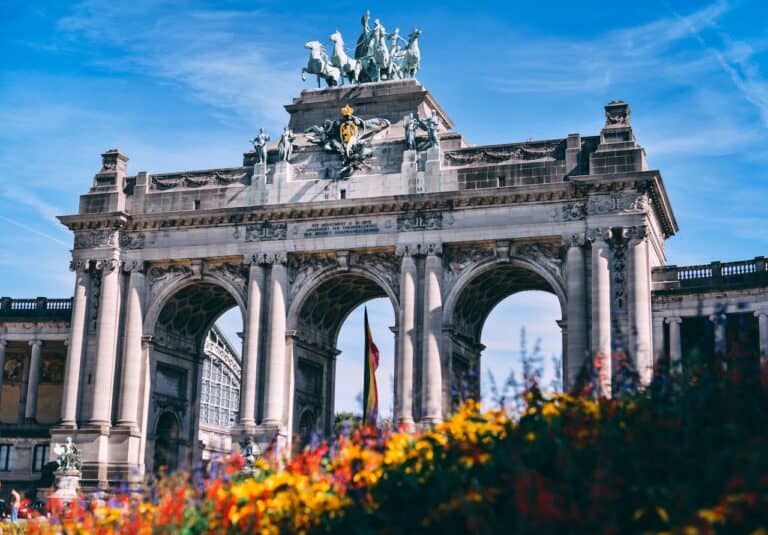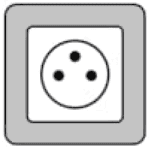Normal 0 false false false EN-US X-NONE X-NONE /* Style Definitions */ table.MsoNormalTable {mso-style-name:"Table Normal"; mso-tstyle-rowband-size:0; mso-tstyle-colband-size:0; mso-style-noshow:yes; mso-style-priority:99; mso-style-parent:""; mso-padding-alt:0in 5.4pt 0in 5.4pt; mso-para-margin:0in; line-height:115%; mso-pagination:widow-orphan; font-size:11.0pt; font-family:"Arial",sans-serif; mso-ansi-language:EN;}
Plug For Belgium: What You Need To Know

What is the plug for Belgium? Before you travel, check the information below to make sure your electronic devices are compatible with the outlet type and voltage.
Electrical Summary
Belgium uses outlet types C, E at a voltage of 230V and a frequency of 50 Hz.
Plug Compatibility: Type C, Type E
Voltage: 230V
Frequency: 50 Hz
Type C

Type E

Can North Americans use Electronics in Belgium without an Adapter?
No! North Americans will need an adapter for the outlets and a transformer for the voltage when traveling to Belgium. North Americans device plugs will not work with the outlet types in Belgium. Also, the voltage in Belgium is different from North American voltages.
Can Europeans use Electronics in Belgium without an adapter?
Yes! Most Europeans do not need a travel adapter or transformer when traveling to Belgium. Most device plugs will work with the outlet types in Belgium. Also, the voltage in Belgium is the same as in Europe.
What Outlet does Belgium Use?
Type C

Type C plug sockets are used in Europe, Africa and Asia. They have two round pins and no grounding pin. These plugs are typically used with devices that have a voltage of 220-240V. This outlet is rated for 2.5 amps. Plug Type E, and Type F are compatible with this socket. All other plug types will need an adapter.
Type E

Type E plug sockets are used in France, Belgium, Poland and some parts of Africa. They have two round pins and a grounding pin. These plugs are typically used with devices that have a voltage of 230V.
Is it safe to drink water in Belgium?
To be on the safe side, you can use common precautions such as boiling tap water for at least one minute, using water purification tablets, or drinking bottled water. It’s also important to note that ice may be made from tap water and that foods may be washed or prepared with tap water.
We recommend always packing a filtered water bottle when traveling:
Travel Essentials
Be sure to check our list of travel essentials before your trip!
Should I get travel insurance when traveling to Belgium?
It is generally recommended to get travel insurance when traveling to a different country. Travel insurance can provide financial protection and peace of mind in case of unexpected events, such as medical emergencies, trip cancellations, lost or stolen baggage, or other travel-related mishaps.
Travel insurance can cover various expenses related to your trip, such as medical expenses, emergency medical transportation, trip cancellation or interruption, lost or stolen baggage or personal belongings, and other travel-related expenses.
Before purchasing travel insurance, it’s important to carefully review the policy details, including the coverage limits, exclusions, and any applicable deductibles or copays. You should also make sure that the policy covers any activities or destinations that you plan to participate in or visit during your trip.
Travel Summary
The capital of Belgium is Brussels, which is also the headquarters of the European Union. Brussels is a beautiful city that offers a mix of old-world charm and modern cosmopolitan culture. Visitors can explore the Grand Place, a UNESCO World Heritage Site, which is surrounded by stunning buildings such as the Town Hall and the Maison du Roi. Brussels is also famous for its chocolate, waffles, and beer, which are all must-try experiences.
Other major cities in Belgium include Bruges, Ghent, and Antwerp. Bruges is a charming medieval town that is often called the Venice of the North due to its picturesque canals. Visitors can take a boat ride along the canals, explore the medieval architecture, and sample some of the local chocolate and beer. Ghent is another beautiful city that is known for its stunning architecture and vibrant nightlife. Antwerp is a bustling port city that is famous for its diamond industry and beautiful museums.
Belgium is also home to many world-class museums, including the Royal Museum of Fine Arts in Brussels, the Groeningemuseum in Bruges, and the Rubenshuis in Antwerp. Visitors can also explore the country’s World War I battlefields and memorials, which are a reminder of Belgium’s important role in the history of Europe.
In summary, Belgium is a small but diverse country that offers a range of experiences for visitors. From exploring medieval architecture to indulging in delicious food and drink, there is something for everyone. It is a must-visit destination for anyone who loves history, art, and culture.
Traveling to another country? Check out our Countries page for more info.